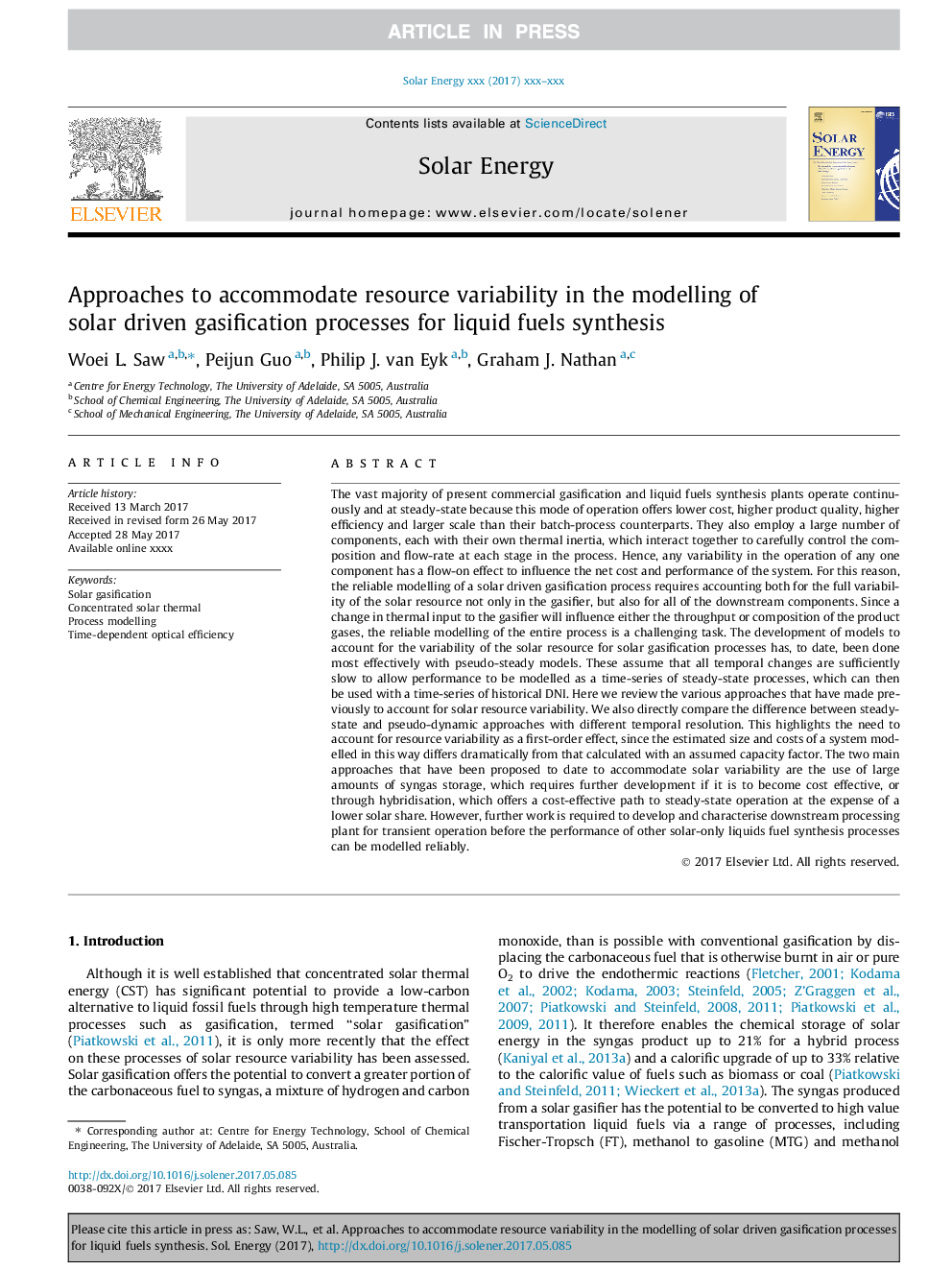| Article ID | Journal | Published Year | Pages | File Type |
|---|---|---|---|---|
| 7936311 | Solar Energy | 2017 | 12 Pages |
Abstract
The vast majority of present commercial gasification and liquid fuels synthesis plants operate continuously and at steady-state because this mode of operation offers lower cost, higher product quality, higher efficiency and larger scale than their batch-process counterparts. They also employ a large number of components, each with their own thermal inertia, which interact together to carefully control the composition and flow-rate at each stage in the process. Hence, any variability in the operation of any one component has a flow-on effect to influence the net cost and performance of the system. For this reason, the reliable modelling of a solar driven gasification process requires accounting both for the full variability of the solar resource not only in the gasifier, but also for all of the downstream components. Since a change in thermal input to the gasifier will influence either the throughput or composition of the product gases, the reliable modelling of the entire process is a challenging task. The development of models to account for the variability of the solar resource for solar gasification processes has, to date, been done most effectively with pseudo-steady models. These assume that all temporal changes are sufficiently slow to allow performance to be modelled as a time-series of steady-state processes, which can then be used with a time-series of historical DNI. Here we review the various approaches that have made previously to account for solar resource variability. We also directly compare the difference between steady-state and pseudo-dynamic approaches with different temporal resolution. This highlights the need to account for resource variability as a first-order effect, since the estimated size and costs of a system modelled in this way differs dramatically from that calculated with an assumed capacity factor. The two main approaches that have been proposed to date to accommodate solar variability are the use of large amounts of syngas storage, which requires further development if it is to become cost effective, or through hybridisation, which offers a cost-effective path to steady-state operation at the expense of a lower solar share. However, further work is required to develop and characterise downstream processing plant for transient operation before the performance of other solar-only liquids fuel synthesis processes can be modelled reliably.
Related Topics
Physical Sciences and Engineering
Energy
Renewable Energy, Sustainability and the Environment
Authors
Woei L. Saw, Peijun Guo, Philip J. van Eyk, Graham J. Nathan,
